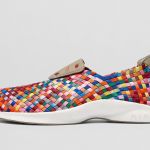
Interview with Nike CEO Mark Parker
via Hypebeast
October 9th, 2015
In an exclusive interview with Hypebeast, Mark Parker, Nike Sportswear’s visionary CEO, talks about the behind the scenes of the brand’s most successful collaborations. From the mutual passions to the exchange of knowledge, from the avant garde technologies to the ambitious future projects.
1. What exactly does the act of having two brands collaborate mean for each brand? In other words, what is the crux of “collaboration?”
Collaboration takes people from different worlds to places they might not have gone on their own. Of course, it invites new ideas from the outside, but it also accelerates your own thinking. In my experience, when the right creatives connect, it can be like setting off a chemical reaction. I find that incredibly stimulating and potentially very powerful. We are fortunate at Nike because we have the opportunity to work with a lot of different communities. We could be focused on something as specific as a sneaker or as immense as climate change, but the important thing is that through the process, we keep learning and move closer to realizing our own potential.
2. Nike is a leader in its field when it comes to product innovation. How much is then learned from other influencers when working together? Is this part of the reason for collaborating in general?
Mutual learning is absolutely critical to any successful partnership. We bring an expert to the table – whether it’s athlete insights or material innovation or global reach – that many of our creative partners don’t have. Of course, we then look to our partners to provide an insight or skill or point of view that we may not have. By combining knowledge, we bring out the best in each other. But it goes deeper than just an exchange of knowledge. There’s a more personal benefit to Nike that’s harder to measure. Being open and curious to the world through collaboration is a way to nourish and inspire our own creative culture.

3. Despite a foot in fashion, how does Nike properly operate and play within the context of trends without sacrificing its identity or taking missteps?
We know who we are: we are the company that serves athletes. We expand what they can do through new inventions and we inspire them to do more. At the same time, we also recognize the cultural impact of sports. Over the years it’s connected us to brands like COMME des GARÇONS, Stüssy, and Supreme and creatives like Tom Sachs, Marc Newson and Riccardo Tisci. Through the creative exchange with each of them, we’ve unlocked new ideas.
4. With Nike’s vast resources and experience, how much autonomy do you offer up to brands when collaborating? Is there a 50/50 or is the process completely flexible?
We go into any creative relationship with an open mind, and I hope our partners do the same. Regardless of how we get there, the most important outcome is that we make something better or more interesting.

5. As much as Nike learns from collaborating with other brands, does it share creative and technical knowledge with its counterparts?
When you problem solve with another partner, you naturally share the capabilities you have to come up with the best outcome. As the company who is leading and defining the future of sport, we have knowledge, access to advanced materials, and capabilities that no one has. It’s a big reason why creative partners seek us out. We want to encourage that exchange; seeing how others interpret your brand and what they can do with our vast set of tools is a big part of why we do it in the first place.
6. How can a collaboration go wrong?
One way a collaboration can go wrong is if your connection is inauthentic or overly prescriptive. Our collaborations aren’t transactions. They are relationships – ones that have been built over months or years before they even come to fruition. You really have to be passionate about the same parts of the universe for any partnership to work.
7. If Nike were to collaborate outside the realms of athletics and fashion, what industry would it be?
Nike collaborates with dozens of industries and communities on any given day. It’s one of our great honors and great responsibilities. When you look back at the last 10 years, these partnerships have really accelerated across our business. We worked with Apple to develop Nike+, a platform that forever changed how we look at servicing the athlete and motivating people to do more. From a manufacturing perspective, collaborations can be the quickest way to disrupt existing models. With Flyknit, for example, we worked with others for six years to reconfigure apparel machines to make footwear uppers. It’s opened up a world of new design possibilities. In a similar way, we’ve invested in a company that has invented a way to dye products without water. We call the technology ColorDry. If you consider it takes 30 liters of water to dye a single T-shirt, the impact could be massive.

8. Can a collaboration take on a meaning outside of just marketing? What about inter-team collaboration? Collaborations with athletes to improve performance?
Of course. Let’s start with the athlete, Nike’s original and most important collaborator. To us, everything starts with the insight. That’s why we work with the deepest roster of athletes, to gain the most profound understanding of what’s needed to perform. I always say that as an innovation company, we’re privileged to work in the world of sports because our source of inspiration – the athlete – never stops progressing. No athlete wakes up and thinks, “Today, I want to perform the same as I did yesterday.” It’s always about getting better, which means we’ll always have new problems to solve. Our job is never done. From an internal perspective, collaboration is at the heart of Nike’s ongoing creative process. We have a collective of brilliant, passionate people that includes over 650 designers, PhDs in our research labs, engineers, material experts, colorists – each of whom work together to pour hundreds of ideas into one product.
9. Where do you see the act of collaboration going in the future?
Collaboration among individuals, brands, and industries will only continue to accelerate as technology facilitates and enables greater connection in real time from anywhere in the world. It’s why we’re experiencing such an unprecedented pace of innovation in every aspect of our lives. It’s clear to me that if all the ingredients are right, collaboration can help shape your vision of the future and get you there faster.









































.jpg)






















